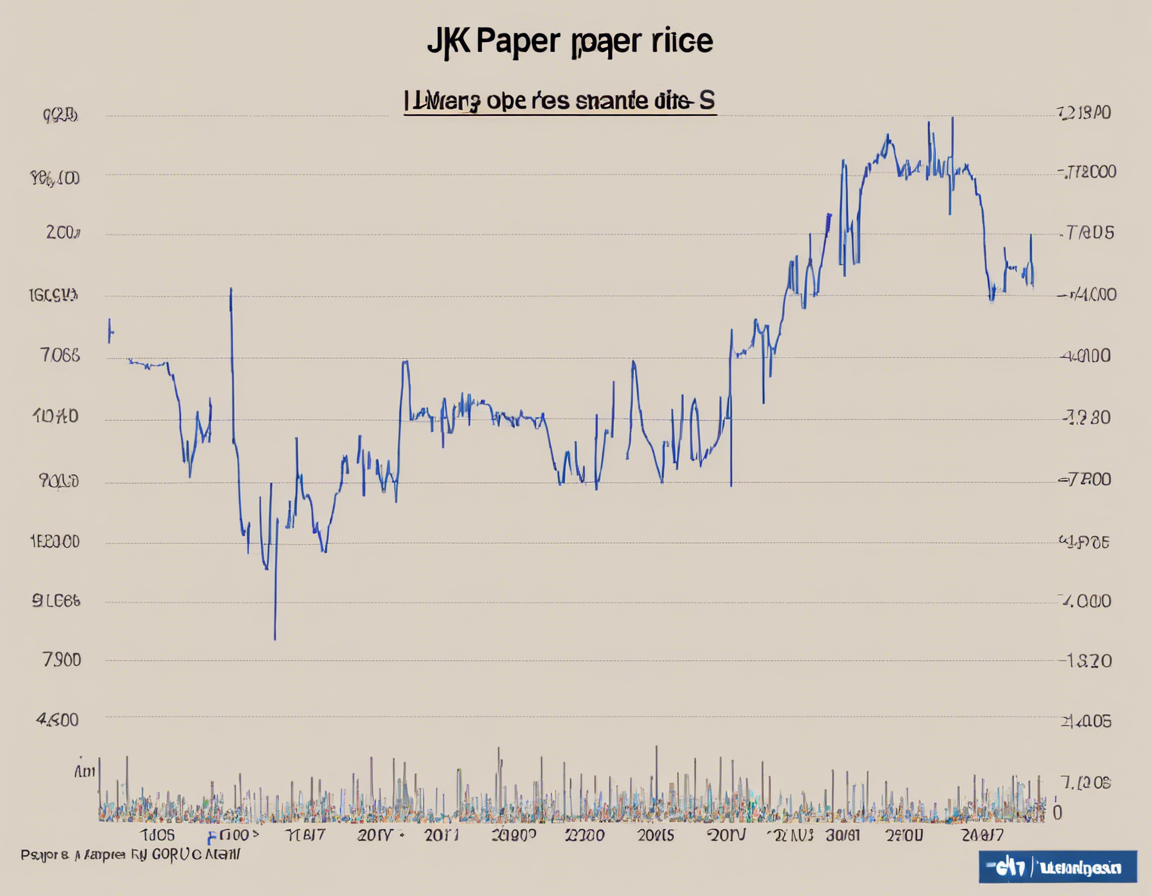The performance and fluctuations in share prices of companies listed on the stock exchange can provide insightful information for investors, analysts, and market enthusiasts. In this post, we will delve into the Share Price performance of JK Paper, a leading paper manufacturing company in India, to understand the various factors that influence its price movements.
Understanding JK Paper
JK Paper Limited is a part of the JK Organisation, one of India’s largest industrial groups with interests in paper, cement, and automotive components, among other sectors. The company is known for its diversified product portfolio, including a wide range of papers such as office papers, packaging boards, and specialty papers.
Factors Influencing Share Price
Several factors can influence the share price performance of a company like JK Paper. Let’s explore some of the key factors:
-
Market Conditions: Economic conditions, market sentiments, interest rates, and inflation levels can impact the share prices of companies in the paper industry, including JK Paper.
-
Financial Performance: JK Paper’s quarterly and annual financial reports, revenue growth, profit margins, and debt levels play a crucial role in determining its share price performance.
-
Industry Trends: Developments in the paper industry, including demand-supply dynamics, raw material prices, and technological advancements, can affect JK Paper’s share prices.
-
Regulatory Environment: Changes in regulations related to the paper industry, environmental policies, and government initiatives can influence the company’s stock performance.
-
Competitive Landscape: Competition from other paper manufacturers, both domestic and international, can impact JK Paper’s market position and, consequently, its share prices.
JK Paper Share Price Analysis
To analyze the share price performance of JK Paper, it’s essential to look at historical data, technical charts, and market trends. By conducting a thorough analysis, investors can make informed decisions about buying, holding, or selling JK Paper shares.
Historical Price Movement
Reviewing the historical share price movement of JK Paper over the past few years can provide valuable insights into the stock’s performance. Investors can identify trends, patterns, and key resistance and support levels to predict future price movements.
Technical Analysis
Technical analysis involves studying charts, indicators, and patterns to forecast future price movements. By analyzing JK Paper’s technical indicators like moving averages, Relative Strength Index (RSI), and Bollinger Bands, investors can gauge the stock’s momentum and potential price direction.
Fundamental Analysis
Fundamental analysis focuses on evaluating a company’s financial health, management quality, growth prospects, and industry position. By examining JK Paper’s key financial ratios, earnings reports, and market share, investors can assess the stock’s intrinsic value and investment potential.
Investment Strategies
Investors can adopt different investment strategies when trading JK Paper shares, including long-term investing, short-term trading, value investing, and momentum trading. Each strategy involves specific risk levels and potential returns, depending on the investor’s financial goals and risk tolerance.
Risks and Challenges
Like any investment, trading JK Paper shares comes with inherent risks and challenges. Market volatility, economic uncertainties, industry disruptions, and company-specific issues can impact the stock’s performance. It’s crucial for investors to conduct thorough research and seek professional advice before investing in JK Paper or any other stock.
Frequently Asked Questions (FAQs)
- Is JK Paper a profitable investment?
-
JK Paper’s profitability depends on various factors such as market conditions, industry performance, and company-specific developments. Investors should conduct their research or consult financial advisors before investing.
-
How does the paper industry’s dynamics affect JK Paper’s share price?
-
The paper industry’s supply-demand dynamics, raw material prices, technological advancements, and regulatory environment can influence JK Paper’s share price movements.
-
What are the key financial indicators investors should consider before investing in JK Paper?
-
Investors should consider financial ratios like P/E ratio, EPS, ROE, debt levels, and revenue growth when evaluating JK Paper’s investment potential.
-
How can technical analysis help in predicting JK Paper’s share price movements?
-
Technical analysis tools like moving averages, RSI, and Bollinger Bands can help investors identify trends, support, and resistance levels in JK Paper’s share price charts.
-
What are the long-term growth prospects for JK Paper?
- JK Paper’s long-term growth prospects depend on factors like demand for paper products, industry innovations, market competition, and the company’s strategic initiatives.
Investors interested in JK Paper shares should conduct thorough research, analyze market trends, and consider their investment objectives before making any financial decisions. By staying informed and vigilant, investors can navigate the dynamic stock market landscape and potentially benefit from the opportunities presented by companies like JK Paper.
